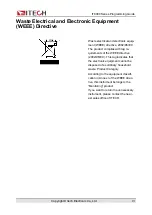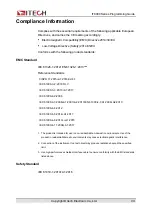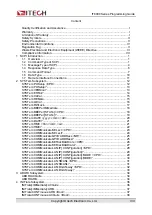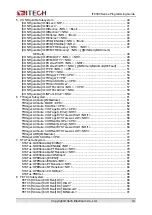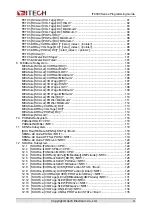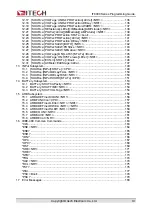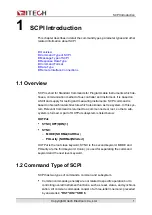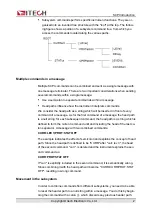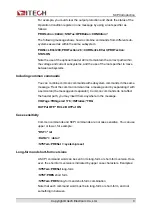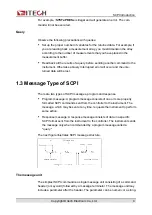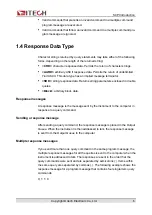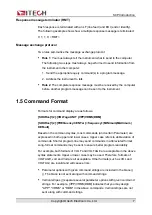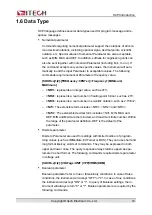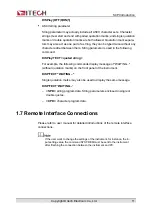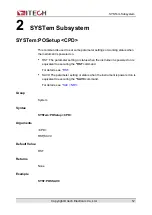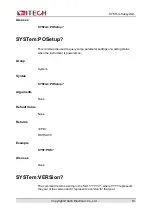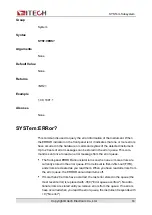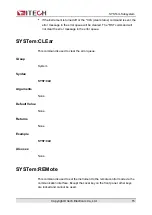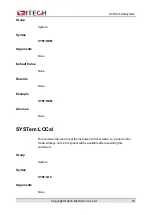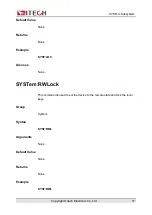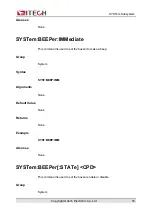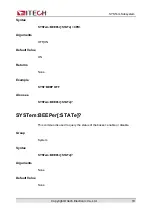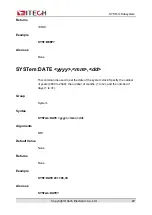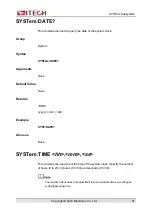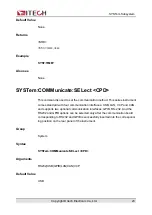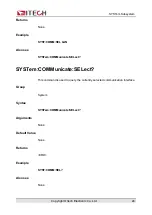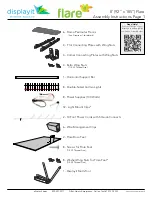
Then, you may query count value by sending the following command:
TRIG:COUN?
You may also query the allowable minimum or maximum count as follows:
TRIG:COUN?MIN
TRIG:COUN?MAX
Comma (,)
If a command requires several Parameter, then a comma must be used to sepa-
rate adjacent Parameter.
Space
You must use blank characters, [TAB] or [Space] to separate Parameter with
key words of commands.
Common commands (*)
The IEEE-488.2 standard defines a set of common commands that perform
functions such as reset, self-test, and status operations. Common commands
always start with a asterisk (*) and occupy 3 character sizes, including one or
more Parameter. Key words of a command and the first parameter are sepa-
rated by a space. Semicolon (;) can separate several commands as follows:
*RST; *CLS; *ESE 32; *OPC?
Command terminator
Command strings sent to the instrument must end with a <Newline> (<NL>)
character. IEEE-488 EOI (End or Identify) information can be used as <NL>
character to replace termination command string of <NL> character. It is accept-
able to place one <NL> after a <Enter>. Termination of command string always
resets current SCPI command path to root level.
As for every SCPI message with one query sent to the instrument, the instru-
ment will use a <NL> or newline sign (EOI) to terminate response of return.
For example, if "DISP:TEXT?" is sent, <NL> will be placed after the returned
data string to terminate response. If an SCPI message includes several
queries separated by semicolon (such as "DISP?;DISP:TEXT?"), <NL> will
terminate response returned after response to the last query. In all cases, the
program must read <NL> in response before another command is sent to the
instrument, otherwise errors will be caused.
Copyright © Itech Electronic Co., Ltd.
9

